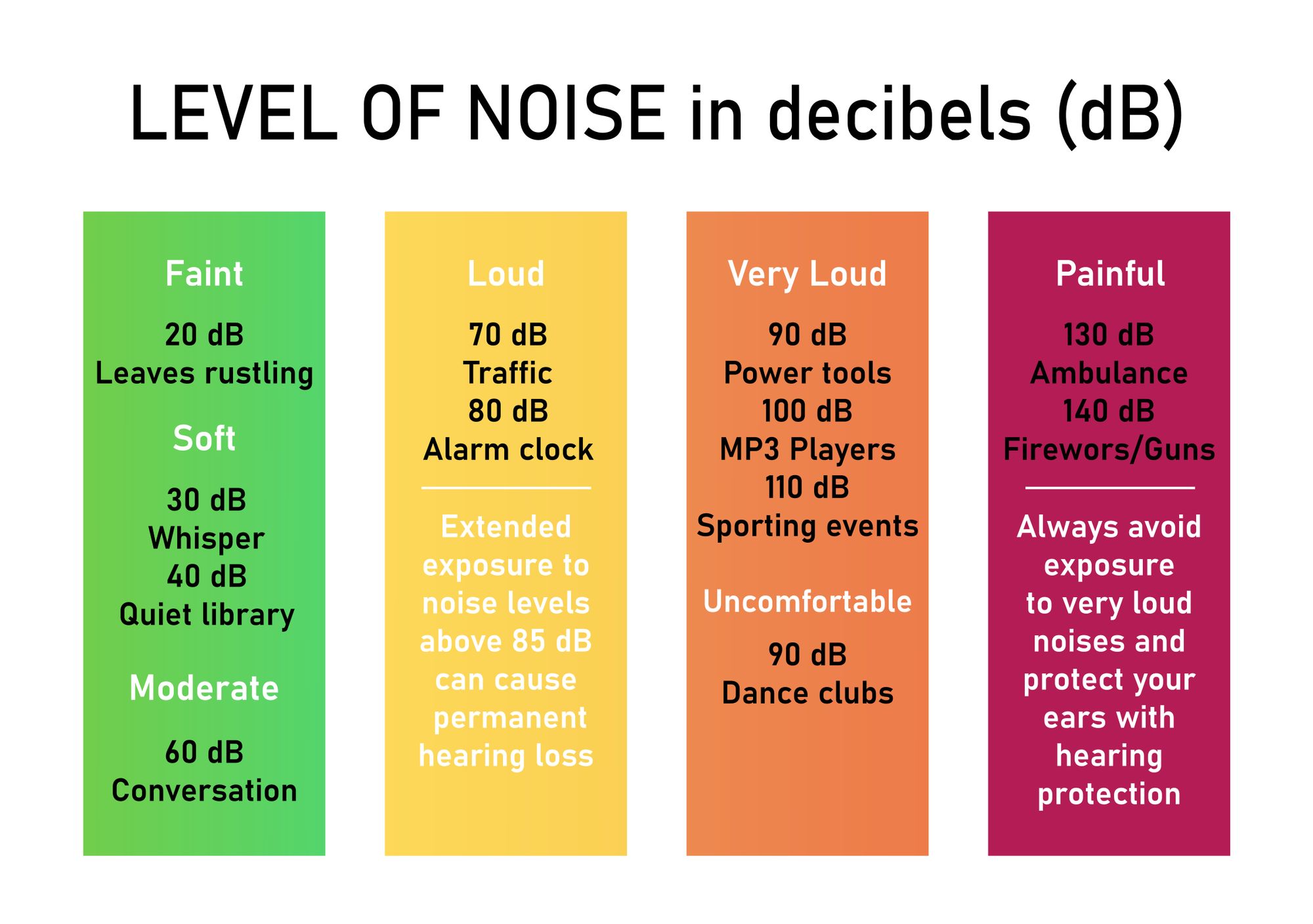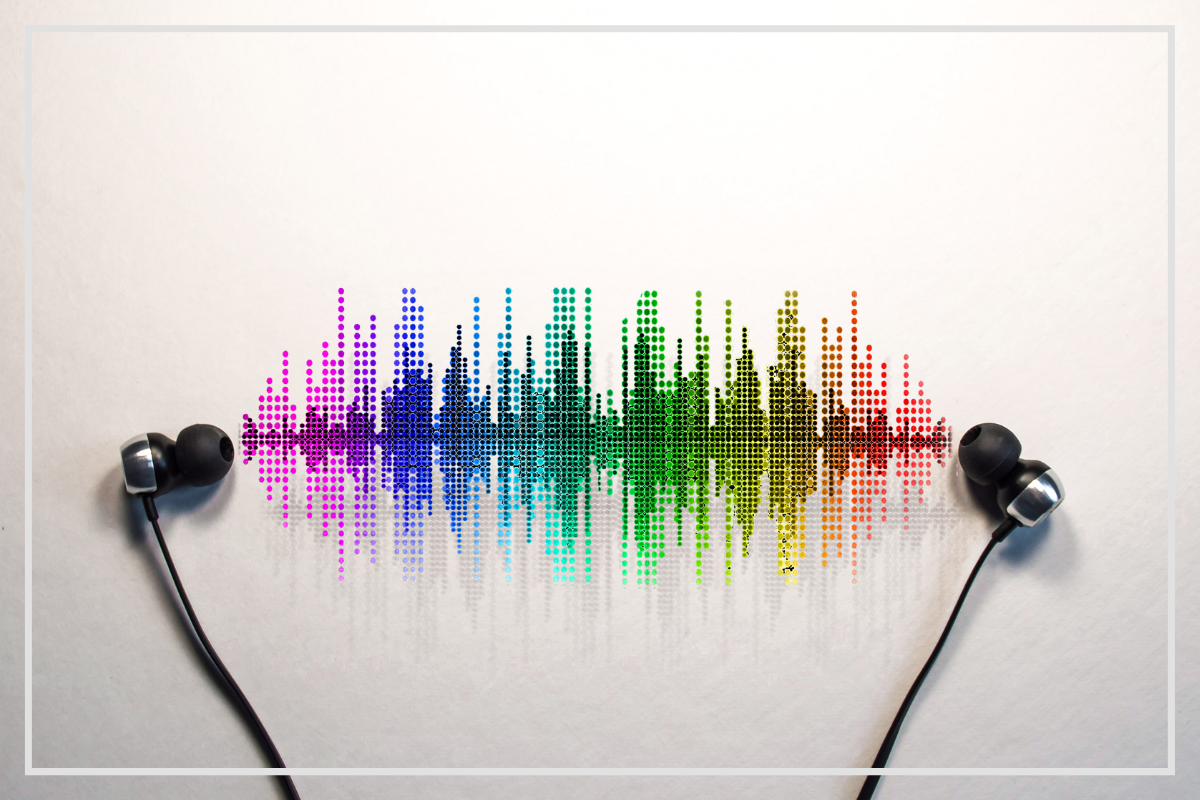- What Is 85 Decibels?
- How Loud Is 85 Decibels in Everyday Life
2.1 Common Sources of the Sound
2.2 Specific Sources of the Sound - Is 85 Decibels Safe?
3.1 How Long Can You Listen to This Sound Level? - When Is Hearing Protection Required?
- What Does 85 Decibels Sound Like Compared to Other Noise Levels?
5.1 50 Decibels
5.2 70 Decibels
5.3 100 Decibels - Measure dB with DecibelPro.App
85 decibels is considered to be the maximum level of noise we should expose ourselves to for longer than 8 hours at a time. That is if we want to protect our hearing and prevent hearing damage or hearing loss.
In this article, we’re taking a closer look at this decibel level to see just how loud 85 decibels is, some 85-decibel examples, and how it compares to other sound levels.
What Is 85 Decibels?
The decibel scale runs from 0 dB (sounds barely hearable to the human ear) up to 130 dB, the threshold of pain.
85 decibels is a high noise level on the decibel scale. It is 15 times more intense than the 70-decibel level considered by the World Health Organization (WHO) and Environmental Protection Agency (EPA) safe for human hearing.
85 decibels is the maximum recommended level for human exposure over 8 hours according to the National Institute for Occupational Safety and Health (NIOSH). It is considered the threshold from which sounds can adversely affect human hearing and persons exposed to noise levels of or above 85 decibels are advised to wear appropriate hearing protection.

Researchers in the field of hearing safety have concluded that exposure to sounds above 85 decibels for periods exceeding 8 hours/day is very likely to cause hearing damage and even hearing loss.
How Loud Is 85 Decibels in Everyday Life
85 decibels is a noise or sound level equivalent to that of a food blender, heavy traffic while you are in the car, a noisy restaurant, or a cinema.
As you can see, there are plenty of situations in everyday life when we are exposed to high noise levels. The downside is that we may not always be aware that prolonged exposure to these sounds can be harmful to our hearing.
To better understand how loud 85 decibels is, here are some common and specific sources of sounds reaching this level:
Common Sources of the Sound
Some common sources or examples of 85-decibel noise are:
- Noisy restaurant
- Noisy hotel lobby
- The inside of an airport
- Heavy road traffic
- Train or truck passing
Common Sources of the Sound
Here are a few specific sources or examples of 85-decibel noise:
- Garbage disposal
- Hairdryer
- Vacuum cleaner
- Tractor
- Police car siren
- Snowblower
Is 85 Decibels Safe?
85 decibels can be considered safe only if your exposure to this noise level does not exceed 8 hours/day. However, this recommendation is a time-weighted average. You can easily reach this average by being exposed to higher noise levels for shorter periods.
If you want to maintain your hearing health, you should consider wearing appropriate hearing protection whenever noise levels exceed 85 decibels even if your exposure time does not reach 8 hours.
For example, if you work in a noisy factory or a construction site, you should wear hearing protection at all times since noise levels may fluctuate and, on average, exceed this recommended limit.
Another example is if you like listening to loud music on your headphones or on other devices. In this case, decibel levels most likely reach 95-105 dB. In such cases, you should reduce your exposure and compensate for listening to loud music with some peace and quiet to ensure your 24-hour average exposure does not exceed 85 decibels.
How Long Can You Listen to This Sound Level?
You can listen to 85 decibels for a maximum of 8 hours per day. This is the recommended average exposure for 24 hours. If you are exposed to sounds above 85 decibels, you should limit your exposure accordingly and consider wearing hearing protection.
For example, if you attend a concert that can reach up to 110 dB, you should wear protection, limit your exposure time, or distance yourself from the speakers since, as sound travels, it loses its intensity.
See the decibel chart below for reference times:

When Is Hearing Protection Required?
Hearing protection is required whenever your exposure to noise levels of or above 85 decibels exceeds 8 hours/day. For example, when you:
- Work in a factory
- Work in construction
- Live in a noisy downtown area
- Are exposed to higher noise levels that can raise your TWA (time-weighted average) above 85 decibels/24 h
You should also consider hearing protection for children and especially infants whenever noise levels exceed 70 decibels no matter the exposure time.
What Does 85 Decibels Sound Like Compared to Other Noise Levels?
Compared to more moderate noise levels, 85 decibels is considered loud. Extended exposure to this noise level is dangerous to human hearing and can cause hearing damage or hearing loss.
50 Decibels
Compared to 50 decibels, which is a moderate noise level comparable to that of a quiet residential neighborhood or a moderately quiet room, a sound that is 85 decibels is considered loud. In fact, it is 35 times more intense than a 50-decibel sound.
70 Decibels
70 decibels is a noise level considered safe for human hearing. Compared to 85 decibels, 70 decibels is 15 times less intense.
Common 70 dB sounds include showers, toilet flushing, a normal restaurant or hotel lobby.
100 Decibels
100 decibels is a very loud noise level and even more damaging to human hearing, which is why it is recommended you limit your exposure to such loud sounds to 45 minutes when not wearing hearing protection.
Common 100 dB sounds include motorcycles, factory noise, disco speakers, and are 15 times more intense than 85-decibel sounds.
Measure dB with DecibelPro.App
It’s now easier than ever to measure noise levels using a decibel meter app like Decibel Pro. This convenient noise level meter app is easy to use and will instantly show you the decibel level of any source of the sound you want to measure on your iPad or iPhone screen.
Decibel Pro allows you to:
- Measure and monitor everyday noise levels you are exposed to
- Take measures to protect your hearing if you are exposed to loud sounds
- Check your home noise levels are safe for your children and acceptable to your neighbors
- Check your hearing regularly with the in-app hearing test
- Set up sound systems using the spectrum analyzer
- Measure and monitor your daily noise exposure
To download Decibel Pro, go to the AppStore. To learn more about the Decibel app, click here.



